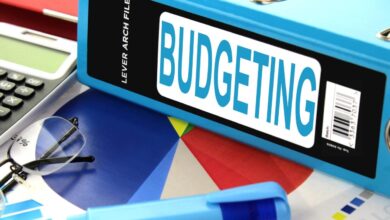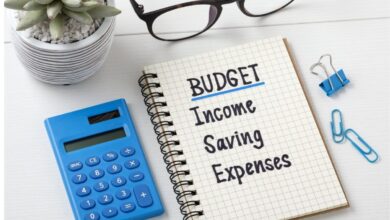Eliminate Bad Debt: Your Financial Freedom Blueprint

Consumer debt is arguably one of the most pervasive and insidious obstacles standing between most individuals and genuine financial security.
Unlike “good debt”—such as a mortgage that appreciates in value or a student loan that boosts earning potential—consumer debt is typically high-interest, non-productive debt accrued on depreciating assets or fleeting experiences, things like credit card balances, personal loans for vacations, or financing high-end gadgets.
This kind of debt, with its high Annual Percentage Rates (APRs), acts like a relentless financial anchor, steadily eroding your wealth and often trapping you in a cycle where a significant portion of your hard-earned income goes straight to paying interest, not principal.
The emotional toll of this cycle is just as damaging, leading to stress, anxiety, and strained relationships, making it difficult to focus on future goals.
To truly move forward and begin building wealth, you must first acknowledge that eliminating consumer debt is not just a monetary transaction; it is a fundamental shift in financial philosophy and lifestyle.
It requires a commitment to discipline, a willingness to make temporary sacrifices, and a concrete plan to dismantle that debt load systematically.
This journey transforms you from a financial victim constantly reacting to bills into a proactive master of your own money, paving the way for substantial saving and meaningful investment.
I. Understanding the Enemy: Defining Consumer Debt

To defeat consumer debt, you must first clearly identify what it is and understand its corrosive impact on your financial future.
A. The Definition of “Bad Debt”
Consumer debt is typically unsecured, meaning it isn’t backed by collateral, making it riskier for the lender and thus attracting much higher interest rates.
It is debt used to purchase items that do not generate income or maintain value, such as clothes, electronics, and daily consumables charged to a credit card. This category often includes high-interest installment loans and most store credit accounts.
B. The High-Interest Trap
The danger of consumer debt lies almost entirely in its interest rate. Many credit cards carry APRs between 18% and 30%.
This exponential interest often means that even if you consistently make the minimum payment, the balance barely decreases, and you end up paying far more in interest than the item was originally worth.
C. The Opportunity Cost
Every dollar spent on high-interest debt payments is a dollar that cannot be invested in wealth-building assets like retirement funds or index funds.
This is known as opportunity cost, and the longer you carry consumer debt, the more severely you miss out on the power of compounding interest, costing you hundreds of thousands over a lifetime.
D. Psychological Burden
The constant pressure of debt affects mental health, decision-making, and even physical health. Eliminating this debt provides a tangible and significant boost to your overall well-being, freeing up mental bandwidth to focus on more productive life pursuits.
II. The Foundational Preparation: Creating Clarity
Before launching a debt attack, you need a precise, comprehensive view of your current debt landscape.
A. List Every Debt
Gather all statements and create a master list of every single consumer debt you owe, leaving nothing out, no matter how small or embarrassing it may feel.
B. Gather Essential Data Points
For each individual debt listed, you must meticulously record three critical pieces of information for strategic decision-making.
- A. The Creditor or Institution: The name of the company you owe money to (e.g., Visa, Bank X Personal Loan).
- B. The Current Balance: The exact total amount you currently owe.
- C. The Interest Rate (APR): This is the most crucial number, as it determines how quickly your debt grows.
- D. The Minimum Monthly Payment: The absolute lowest amount you must pay to keep the account current.
C. Stop the Bleeding
Immediately commit to not accruing any new consumer debt. Put away the credit cards, only use a debit card for transactions, and commit to paying cash for everything you buy until your current debt is cleared.
This is a non-negotiable step to prevent the debt bucket from continuing to leak.
D. Establish a Mini-Emergency Fund
Before dedicating every extra dollar to debt, save a small, dedicated “Starter Emergency Fund” of $1,000 to $2,000.
This fund prevents unexpected expenses, like a car repair or a minor medical bill, from forcing you to rely on credit cards again, ensuring your debt-free momentum is protected.
III. Choosing Your Debt Elimination Strategy

There are two primary, proven methods for tackling debt, and the best one depends on your personal financial psychology.
A. The Debt Snowball Method (Psychological Win)
The Snowball Method prioritizes behavioral motivation over maximizing interest savings. This method provides quick wins, which are vital for maintaining momentum in a long debt-payoff journey.
- A. List Debts Smallest to Largest: Ignore the interest rate; focus only on the balance.
- B. Attack the Smallest Debt: Allocate all your extra money to pay off the smallest balance while paying only the minimum on all other debts.
- C. Roll the Payment: Once the smallest debt is paid off, take the full amount you were paying on that debt (the minimum plus the extra principal) and apply it to the second-smallest debt.
- D. Maintain Momentum: Continue this process until the largest debt is paid off, allowing the payment amount to “snowball” and accelerate rapidly.
B. The Debt Avalanche Method (Mathematical Win)
The Avalanche Method prioritizes mathematical efficiency by minimizing the total interest paid, saving you the most money overall. This method is best for individuals who are highly analytical and motivated by efficiency.
- A. List Debts Highest APR to Lowest: Prioritize by the interest rate, regardless of the balance size.
- B. Attack the Highest-Interest Debt: Allocate all your extra money to the debt with the absolute highest APR, while paying only the minimum on all other debts.
- C. Roll the Payment: Once the highest-APR debt is paid off, take the full amount you were paying and apply it to the debt with the next-highest APR.
- D. Maximize Savings: Repeat until all consumer debt is eliminated, guaranteeing you pay the least amount of total interest.
IV. Unleashing the Debt Attack: Generating Extra Cash
To accelerate your debt payoff, you must drastically increase the monthly amount you can dedicate to principal payments. This requires finding extra income and cutting expenses aggressively.
A. Aggressive Cost Cutting
Implement an immediate “Financial Fast” by temporarily reducing discretionary spending to the bare minimum, treating every saved dollar as ammunition against your debt.
- A. Cancel Non-Essential Subscriptions: Review all recurring payments and immediately cancel streaming services, gym memberships (if unused), and unused apps.
- B. Drastically Reduce Dining Out: Commit to cooking every meal at home for a designated period (e.g., 90 days), only spending money on essential groceries.
- C. Temporary Lifestyle Downgrade: Avoid new clothes, expensive entertainment, and non-essential travel until the consumer debt is gone.
B. Finding a Side Hustle
Actively seek temporary ways to generate income outside of your primary job, dedicating 100% of these earnings to debt repayment.
- A. Gig Economy Work: Drive for a rideshare or delivery service a few hours a week.
- B. Freelancing: Use existing skills (writing, graphic design, tutoring) to earn extra money online.
- C. Part-Time Retail: Take on a seasonal or weekend job at a local store.
C. Selling Unnecessary Assets
Declutter your home and sell items you no longer use, creating a one-time cash infusion for your debt. This not only generates funds but also physically removes clutter, which can be psychologically freeing.
- A. Furniture and Decor: Sell unused or redundant items through local marketplace apps.
- B. Electronics: Sell old phones, laptops, and tablets that are gathering dust.
- C. Clothing and Collectibles: Sell designer clothing or items with collectible value that you no longer cherish.
D. Negotiating and Transferring Debt
Use financial maneuvering to reduce the weight of interest on your current debt.
- A. Balance Transfers: Explore credit cards offering a 0% APR introductory rate on balance transfers, but ensure you can pay off the full amount before the promotional period ends to avoid massive deferred interest charges.
- B. Call for Lower APRs: Contact your current credit card companies and explain your aggressive payoff plan, asking them to temporarily or permanently lower your interest rate.
V. Psychological Mastery: Staying Motivated
The debt payoff journey is a marathon, not a sprint, and maintaining motivation when faced with large balances is key to reaching the finish line.
A. Celebrate Milestones
Break down your total debt into smaller, achievable milestones (e.g., every $5,000 paid off, or paying off an entire credit card).
Celebrate these milestones non-financially with low-cost rewards, like a celebratory movie night at home or a long hike.
B. Use Visualization
Keep a physical debt payoff tracker, like a “debt thermometer” or a chart, prominently displayed in your home.
Coloring in the chart every time you make an extra payment provides a powerful visual reminder of your progress.
C. Focus on the Future Freedom
Constantly remind yourself of why you are doing this—not just to pay bills, but to fund your future goals, like buying a house, traveling, or achieving early retirement. Keep a picture of your goal destination (financial freedom) nearby.
D. Accountability Partner
Share your goal with a trusted friend, family member, or partner who can provide encouragement and hold you accountable when you feel tempted to slip back into old spending habits.
VI. Life After Debt: Permanent Change
Once the consumer debt is gone, the work is not over. You must implement permanent changes to your lifestyle to ensure you never fall back into the high-interest trap.
A. Build a Fully Funded Emergency Fund
Immediately pivot your debt-attacking aggression toward building a fully funded emergency fund that covers three to six months of essential living expenses. This is your insurance policy against future debt.
B. Live by the Zero-Based Budget
Continue to utilize your strict budget, maintaining the awareness and discipline you gained during the payoff period. Treat your budget as permission to spend, ensuring you never spend money you don’t have.
C. Save for Large Purchases
Implement a “cash-only” rule for future large purchases. If you want a new television or a vacation, use a sinking fund to save up the cash beforehand, avoiding the use of credit or loans.
D. Use Credit Cards Responsibly (or Not at All)
If you choose to keep credit cards for convenience or rewards, commit to treating them exactly like a debit card: never charge anything you cannot pay off in full before the due date.
If you lack the discipline, cut them up and stick to a debit card.
E. Accelerate Wealth Building
Redirect all the monthly cash flow that was previously enslaved to debt payments straight into investments—specifically retirement and brokerage accounts. This is the moment your money truly starts working for you, turbo-charging your path to wealth.
Conclusion
Eliminating consumer debt is a profound act of financial liberation. It is the necessary foundation that allows you to start building sustainable wealth.
This process demands temporary sacrifice, but the enduring clarity and freedom are worth every disciplined moment. The psychological relief that comes from breaking the debt cycle is arguably the most valuable return on your investment of effort.
You gain complete control over your income, ensuring your money funds your life, not the banks and credit companies.
Moving beyond debt allows you to finally harness the power of compounding for saving, rather than against you for interest. This systematic approach is a permanent gateway to a less stressful, more prosperous financial existence.




